
Comment VestaConnect est passée du statut de MVP à celui d'adoption payante
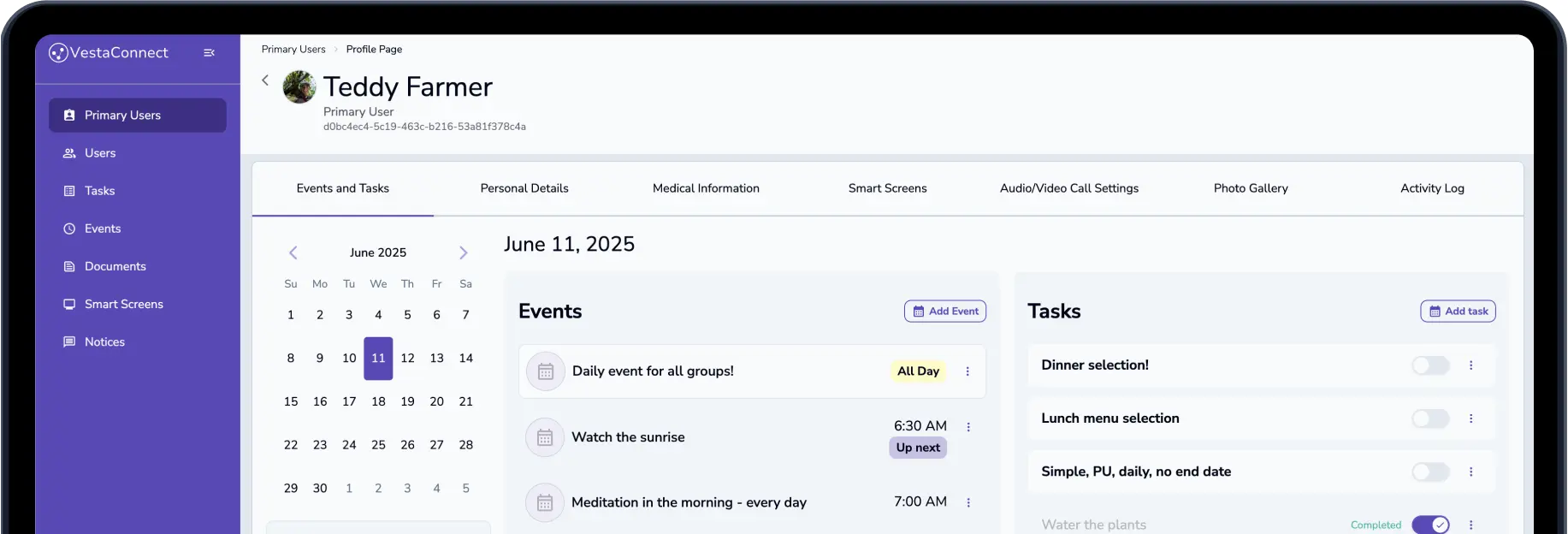


About this project
VestaConnect s'est associé à Imaginary Cloud pour créer une plateforme numérique qui améliore la vie des personnes âgées, y compris celles qui ont des problèmes cognitifs. Ils avaient besoin d'une solution conviviale et évolutive pour favoriser la collaboration entre les familles, les soignants et les professionnels de santé, disponible à la fois sur le Web et sur mobile.
Résultat : Un écosystème multiplateforme complet qui rationalise la prestation de soins, améliore le bien-être des utilisateurs et fournit un accès sécurisé aux informations critiques.
our INVOLVEMENT
Design
Développement
Gestion de projet
technologies
Google Cloud Platform
fastapi
Python
PostgreSQL DB
Vite
React
Typescript
React Native
VestaConnect est une solution numérique spécialement conçue pour améliorer la qualité de vie des personnes âgées, y compris celles qui ont des problèmes cognitifs, à l'aide d'un écran spécialement conçu et installé dans leur résidence. Cet écran et les applications qui l'accompagnent permettent à l'utilisateur de voir ses tâches et événements quotidiens, qui peuvent être gérés et mis à jour par les familles, les amis et les soignants. Il fournit des horaires et des rappels quotidiens, facilite la communication entre tous les utilisateurs et stocke en toute sécurité des photos, des documents et des informations médicales critiques.
Les principales fonctionnalités de la plateforme sont les suivantes :
• Gestion et planification des tâches : Veiller à ce que les responsabilités quotidiennes soient claires et partagées entre les soignants.
• Outils de collaboration : Permettre une communication et une coordination fluides entre les familles et les praticiens.
• Accès aux informations critiques : Fournir aux administrateurs et aux soignants les données nécessaires pour soutenir efficacement chaque individu.
• Connectivité sociale : Promouvoir l'interaction et l'engagement communautaire pour réduire l'isolement et améliorer le bien-être, y compris la possibilité de passer et de recevoir des appels vidéo.
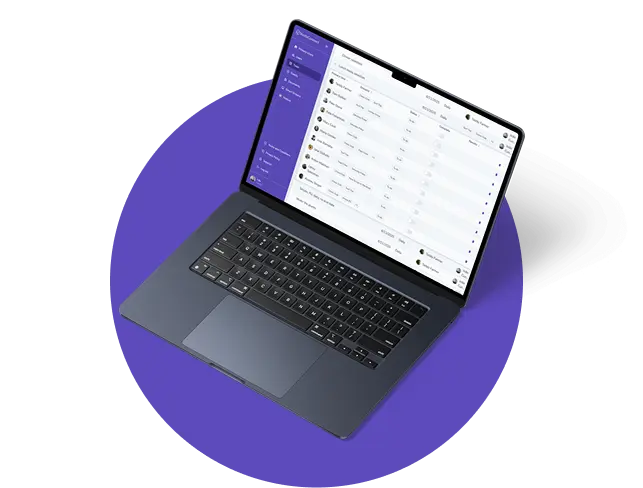
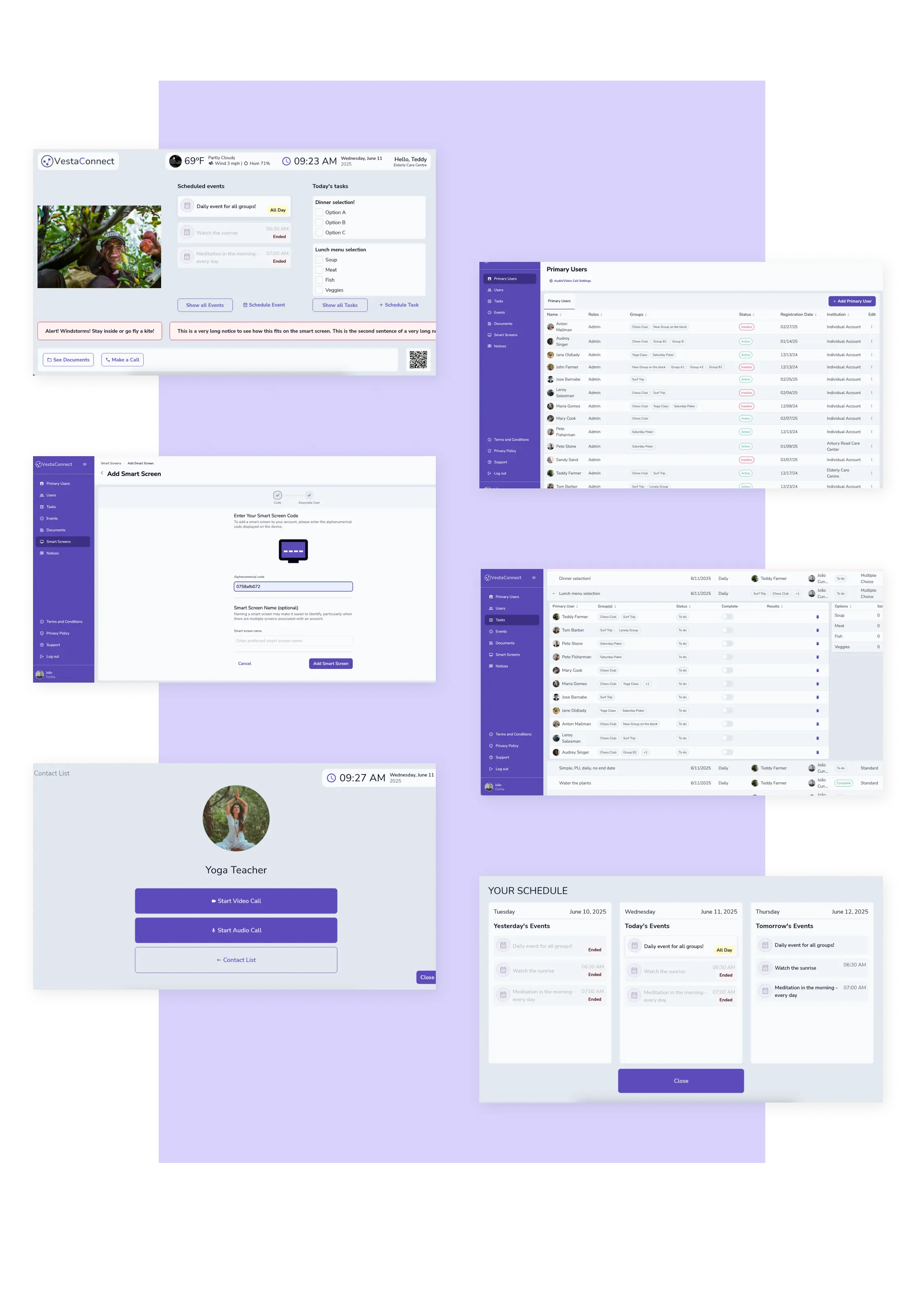
Imaginary Cloud était responsable de la conception, du développement et de la gestion de projet de bout en bout de l'écosystème de VestaConnect. Cela comprenait le portail administratif utilisé par le personnel soignant et les membres de la famille ayant des responsabilités familiales, ainsi qu'une application mobile native adaptée à une utilisation quotidienne par les personnes âgées.
Notre rôle était notamment de :
• Concevoir des interfaces centrées sur l'utilisateur pour les soignants et les personnes âgées, en mettant l'accent sur l'accessibilité et la facilité d'utilisation.
• Mise en place d'une plateforme d'administration qui centralise les données des utilisateurs et les tâches de soins.
• Développement d'une application Web réactive pour faciliter l'utilisation via un navigateur.
• Création d'une application mobile native pour une portabilité et une accessibilité accrues au cours de la phase 3.
• Garantir l'évolutivité et les performances grâce à des infrastructures basées sur le cloud.
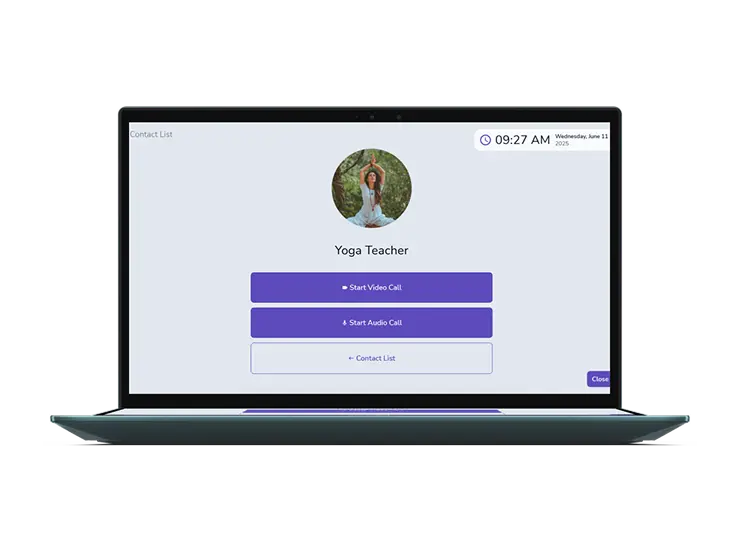 NEW PROJECT IN MIND? LET'S TALK
NEW PROJECT IN MIND? LET'S TALKduring the project
Le projet a débuté par Approche MVP, décomposé en trois phases stratégiques. Ces phases ont permis une livraison progressive et des tests auprès d'un groupe de premiers utilisateurs.
Après le MVP, l'équipe a adopté le Processus de développement agile (ADP), en mettant l'accent sur :
• Collaboration continue avec le client.
• Itération rapide basée sur les commentaires de vrais utilisateurs.
• Amélioration des priorités du backlog et définition de la feuille de route sur la base des commentaires des utilisateurs de la version bêta.
two stages
Migration
Development
four stages
Research
Ideation
Execution
Technical Assessment
four stages
Requirements
Back-end integration
Website development
Advanced filtering and search
four stages
Research
Ideation
Execution
Technical Assessment
four stages
Backlog
Bootstrap
Wave 0
Wave N
four stages
Research
Ideation
Execution
Launch & Handover
two processes
MVP
ADP
Four stages
Scope meeting
Code review
Test review
Quality review
Assessment
Four stages
Backlog
Bootstrap
Wave 0
Wave N
during the project
Le projet a débuté par Approche MVP, décomposé en trois phases stratégiques. Ces phases ont permis une livraison progressive et des tests auprès d'un groupe de premiers utilisateurs.
Après le MVP, l'équipe a adopté le Processus de développement agile (ADP), en mettant l'accent sur :
• Collaboration continue avec le client.
• Itération rapide basée sur les commentaires de vrais utilisateurs.
• Amélioration des priorités du backlog et définition de la feuille de route sur la base des commentaires des utilisateurs de la version bêta.
Imaginary Cloud started by migrating the existing database from Wordpress MySQL to PostgreSQL. A daunting task because of the thousands of items and large size of assets that are normal in a CG marketplace.
After the migration was completed, the team focused on migrating its infrastructure. The site was hosted on Heroku, which had relevant constraints on the ability to scale. Imaginary Cloud was able to migrate it to AWS, completing the first stage in just 2 months.
After the successful delivery of Stage 1, the client continued to work with Imaginary Cloud on a continuous development basis, adding more features to its product to fuel its growth. The team worked on many different elements, from payment integrations to sales campaign tools to facilitate marketplace promotional campaigns. Imaginary Cloud also helped Flipped Normals improve its Google positioning by implementing an SEO audit, which tweaked the site’s performance and content relevancy.
The project started off with a team meeting to list all the client requirements. This thorough investigation allows for an easier, quicker, and more cost-efficient delivery. This meeting was led by our Project Manager, which supports the team all through the project, and our Developer, ensuring all technical details are discussed.
Eurofound provided a solid brief that captured the existing infrastructure, their vision for the website, and the technical constraints and requirements. It was a challenging task that needed to be completed in 6 weeks.
Our developer started the development process by creating the back-end integration that would allow the new website to fetch content from the existing database. Using a Django framework, we were able to create an efficient and quick application that retrieved data, generated listings of results and allowed for more advanced options.
Imaginary Cloud and Eurofound met on a weekly basis to ensure everything was being developed as required by the client.
With the main software completed, the next stage was to develop the website to access such tool. For this, our developer followed Eurofound’s style guide to ensure coherence across the client’s digital presence.
Although no designer was allocated to this project, our developer followed UX/UI best practices, since he was able to touch base with several of the designers at Imaginary Cloud.
In order to improve the content navigation, Eurofound wanted to include an advanced filtering and search capability in their database. Having fully mapped the database content in the new software, our developer was able to create a set of category filters that allowed users to select the content of a given topic, and implemented a search element to the page, allowing the user to freely search any document.
We identify the main aspects of the business model and user needs.
First, we gather evidence that will support the decisions taken henceforth, ensuring that no decision is made based on vague assumptions.
This stage consists of 3 steps: a briefing with the project's vision and goals and business requirements; user research to guarantee product usefulness and effectiveness from the user's perspective; and a design benchmark to analyze the landscape of similar and complementary products, design patterns and technologies used in the industry.
The Research stage allows us to leverage the knowledge and skills of existing players and ensure features and design differentiation in the market, and ensure costumer fit.
We formulate an approach to the product based on the user's needs and the business model.
This is the core of the creative process and it is where the concept of the product is formulated based on the user's needs and the business model (both identified in the Research phase). Here, the UX designer, the product designer, and the product owner work closely together.
This stage consists of 4 steps: mapping out the user journey, by describing each user's action, with various user scenarios; a decision matrix that helps prioritize the users' and product's goals while considering the product life cycle's current stage; drawing the wireframes, i.e., the pages’ structure and navigation flow to ensure interface usability and reduce design time; and finally, a mood board to ensure that the product's look and feel conveys the desired user experience and is aligned with the user profile and market strategy.
We bring the concept to life and put it into practice.
In this stage, the product designer focuses on creating a physical representation of the concept that has been defined up to this point.
It consists of 3 steps: a style guide, where we define a graphic interface’s style, considering colour palette, fonts, image style, input fields, buttons, and so on, to ensure consistency throughout the application; a graphic user interface design (GUI) which are the end-looking screens by applying the style guide to the wireframes; and a click-through prototype to facilitate the feedback from stakeholders or potential users and investors.
We guarantee that all requirements and ideas generated are realistic to implement.
In this stage, all the work previously done should be achievable considering the available time and budget previously settled.
It consists of 2 steps: a high-level architecture where we detail how the product will be built, identifying baselines for the needed technologies and skills to make it; and a project plan to define the major milestones and provides a general understanding of the project's structure, phases, intersections and interdependencies.
This initial stage involves gathering crucial information to understand the project's vision, goals, and business requirements. We present the business case, outlining the project timeline, main competitors, complementary products, and high-level exploration of personas. This also involves asking and answering questions to define objectives and explore ideas, ensuring differentiation from existing players in the market.
During the ideation phase, we provide the blueprint and structure for the whole website, which defines the relative importance of content as it flows down the page.
The site map establishes the website's structure and content hierarchy for optimal navigation. Wireframing outlines screen structure and navigation flow, prioritizing your digital product’s functionality over aesthetics. Lastly, for the content ideation we help you plan the page content, providing guidelines for audience-adapted material.
During execution, we deliver the first significant page, typically the home page, ensuring it aligns with your target audience and market strategy. We then apply style to wireframes through GUI design, focusing on visual aesthetics and maintaining consistency across the website. Our Webflow development process follows best practices, incorporating interactions, animations, and responsiveness across devices.
Finally, we present results on a test domain, with client involvement being crucial for a successful outcome.
We provide your teams with comprehensive training sessions and Q&A opportunities to empower them to autonomously manage the content. We offer ongoing support, ensuring all necessary information for website updates is readily available, and we configure permissions within Webflow as needed.
Additionally, we seamlessly integrate the website with essential marketing tools such as Google Analytics, configure SEO optimizations, and seamlessly migrate and connect the desired domain. Leveraging Webflow's reliable hosting services, we ensure the website is published with optimal performance and reliability.
Our UX designers will target the users profiles and identify their needs when using your product, considering its usefulness and effectiveness from their point of view. Research on design patterns and the industry's most used technologies allows leveraging and understand existing players' knowledge and practice. Plus, it ensures your product/design is specific and different.
We will conduct a UX review to set the product requirements considering the established usability heuristics in the field to deliver a consistent and fluid user experience. All information regarding insights and analytics will be summarised in a visual and compelling audit report that showcases the UX Audit's main findings, quick wins, and recommendations regarding your product's potential improvements.
Together, we will baseline the style guide to ensure that your product's different visual interface elements' are consistent and coherent. Running a UX Audit allows us to solve the main encountered problems with the execution of end-looking screens. Plus, all recommendations that resulted from quick wins acknowledgement will be designed for implementation.
Briefing: Our solution architects begin by engaging with stakeholders to deeply understand the business challenges or goals. This involves detailed discussions to identify the specific problem that needs solving and the desired outcomes, ensuring that the solution is perfectly aligned with your strategic objectives.
Tech Solutions Assessment: After grasping the business requirements, our architects translate these into technical specifications. This step involves identifying and shortlisting the most suitable technologies, platforms, and tools that can achieve the desired functionalities effectively and efficiently.
Solution Architecture Design: We design the overall technical architecture of the solution, considering key factors like scalability, security, performance, and integration with existing systems. This blueprint serves as the foundation for all subsequent development work, ensuring that the solution is both robust and adaptable to future needs.
Technologies & Tools Selection: Based on the architecture design, we recommend and evaluate the technologies and tools that best fit the solution's needs and your organization’s existing infrastructure. This ensures that the technology stack is optimal, cost-effective, and future-proof.
Project Plan: We develop a comprehensive project plan that outlines the major milestones, phases, and interdependencies. This plan provides a clear understanding of the project structure and helps in managing expectations and timelines effectively.
Project Backlog: We identify and prioritize user stories, breaking them down into manageable sub-tasks for both front-end and back-end development. This step ensures that the development process is organized, with clear priorities and a focus on delivering value at each stage.
Solutions Architecture Implementation: Our solution architects work closely with development teams to ensure that the solution is implemented according to the designed architecture. This involves continuous collaboration with developers, system administrators, and other IT professionals to ensure that the architecture is realized effectively.
Continuous Improvement: We believe in continuous improvement. After the solution is deployed, we regularly assess the architecture to identify any areas for improvement. This allows us to make necessary adjustments, ensuring that the solution remains effective, efficient, and aligned with evolving business needs.
The product backlog is a list of business and project goals and contains what is forecasted to be developed by the development team, and maintained by the Product Owner. It is a living document, updated continuously, prioritized, and ordered by business value. It may also have product improvements, bugs, technical questions, and so on. Its purpose is mainly to have everything that is needed to reach the project’s Product Vision.
In this stage, we also create a sprint backlog, which is a list of tasks that need to be completed during each sprint. We prioritise the user stories for each sprint and ensure that the team knows what they need to work on.
With the sprint backlog in place, the development process finally starts. Working through the sprint backlog, and delivering small usable pieces of software frequently allows for continuous feedback and refinement, ensuring that the product is always on the right track.
In this stage, we put in place a briefing that includes the information gathered during the workshop with the team and stakeholders. It presents the vision and goals of the project and clarifies all necessary business requirements. This is also where a FAQ session relative to the nature of the project takes place.
The high-level architecture involves the development of the technical design, with the ideal balance between complexity and reach. This is where we identify external dependencies from third-party providers, such as Stripe, Facebook, Amazon, and so on.
We then start the CI/CD workflow which is the setup of the issue management tool, code repositories, continuous integration system, and development & staging environments. It’s followed by the setup of the code repo and automated test framework, the staging environment and production servers, as well as the continuous integration ecosystem (i.e. servers, deploy hooks)/continuous deployment.
Finally, in Feature 0 we deliver the first meaningful feature: a homepage, a login screen, part of the first dashboard. This step ensures that there is something demonstrable with the perception of value at the end of the phase.
With the Data Model, we provide the first baseline of the product’s evolutive data model. It identifies the main data entities and relationships and baselines the data sources and data stores (i.e. relational databases, document data stores, etc.). This step also consists of iterating the product concept and designing the first version of the data model.
Here’s when we present the Proof Of Concept (PoC), Minimal Testable Product (MTP), or Minimal Viable Product (MVP), and we deliver and deploy the first version of the product - even if that version is the implementation of a concept. This helps mitigate technical risks and test the main business premises for developing a market-ready version of the product through a viability assessment.
On the production increments step, we review technical and business risks and the impact of the PoC, MTP, or MVP on the initial premises or Wave 0. Here, we also identify reusable components from Wave 0 to Wave 1 (i.e. often PoCs are not reusable). This helps gather feedback about the first integrated model and assesses the product's viability before moving to Wave 1.
Finally, the wave retrospective reviews the product state, evaluates wave success against business goals, and identifies improvements. We then design goals for the next wave & prioritise features. Doing this allows the team to analyse the work that has been done in previous sprints and plan consciously what should be the next mountain to climb.
We start with a Scope Review Meeting where we identify the main project goals, the domains to review, and which metrics we will assess, capturing info about Maintainability, Cyclomatic, Inheritance, Class, and others.
We proceed to execute the Code Review by looking at Architecture to understand how the product is built, its principles, and its patterns.
Now it's time for a Test Review, where we assess unit tests, code coverage, and test quality.
We follow up with a Code Quality Review, where we list all the issues and describe them to the fullest, identifying the critical ones and categorising them.
We close the process with an Assessment stage where we list all recommended fixes and provide an estimate of the resources needed to implement them.
TECHNOLOGIES used

.png)






A hébergé l'ensemble de l'infrastructure, garantissant évolutivité, performances et sécurité.
Services backend gérés et points de terminaison d'API pour les applications Web et mobiles.
Utilisé pour créer la logique du backend et alimenter FastAPI.
A servi de base de données relationnelle principale pour stocker les données des utilisateurs, les tâches, les horaires et les journaux d'activité.
A permis un développement et un regroupement rapides et efficaces de l'application frontale.
Utilisé pour créer une interface utilisateur Web réactive pour les soignants et les administrateurs.
Sécurité des types assurée et amélioration de la maintenabilité du code sur les bases de code frontales et dorsales.
Utilisé pour développer l'application mobile native, permettant une utilisation fluide sur les appareils iOS et Android par tous les utilisateurs.
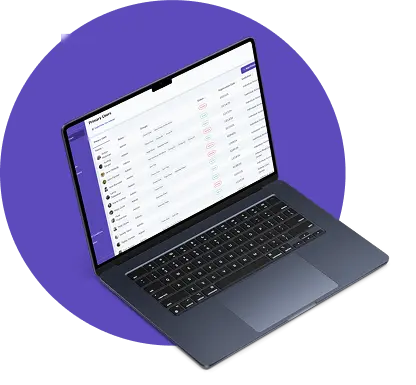
VestaConnect a embauché un Équipe gérée pour répondre aux exigences d'une feuille de route rapide et ambitieuse.
Chef de projet : A supervisé le calendrier des projets, coordonné entre le client et les équipes de développement, géré la portée et les priorités et assuré une livraison fluide à toutes les phases. Les concepteurs ont dirigé la conception UX/UI pour les plateformes Web et mobiles, en mettant l'accent sur l'accessibilité, la facilité d'utilisation et un langage de conception cohérent dans l'ensemble de l'écosystème.
Développeurs backend : Développement de la logique d'application de base, création et maintenance de l'API avec FastAPI, gestion de la base de données PostgreSQL et garantie de fonctionnalités côté serveur sécurisées et fiables.
Développeurs Frontend : Conception de l'interface Web à l'aide de React et TypeScript, en implémentant toutes les fonctionnalités clés telles que la planification, la gestion des tâches et les tableaux de bord utilisateur.
Ingénieur QA : A créé et exécuté des plans de test pour garantir la stabilité de la plate-forme, a effectué des tests manuels et automatisés et a vérifié toutes les fonctionnalités sur les appareils et les navigateurs.
This project delivered an in-depth understanding of the customer persona and their interaction with the service.
A fourni un MVP fonctionnel en phase 1, qui a été testé avec succès par un groupe d'utilisateurs de la version bêta.
Les commentaires des utilisateurs de la version bêta ont permis d'élaborer une feuille de route du produit claire et exploitable.
Développement et publication réussis d'une application mobile native au cours de la phase 3, permettant l'expansion du nombre d'utilisateurs.
La plateforme est passée d'un modèle bêta à un modèle payant avec une adoption accrue par les utilisateurs cibles.
Coordination simplifiée des soins quotidiens, améliorant la qualité de vie des personnes âgées et de leurs soignants.


The project behind the NDA
VestaConnect s'est associé à Imaginary Cloud pour créer une plateforme numérique qui améliore la vie des personnes âgées, y compris celles qui ont des problèmes cognitifs. Ils avaient besoin d'une solution conviviale et évolutive pour favoriser la collaboration entre les familles, les soignants et les professionnels de santé, disponible à la fois sur le Web et sur mobile.
Résultat : Un écosystème multiplateforme complet qui rationalise la prestation de soins, améliore le bien-être des utilisateurs et fournit un accès sécurisé aux informations critiques.